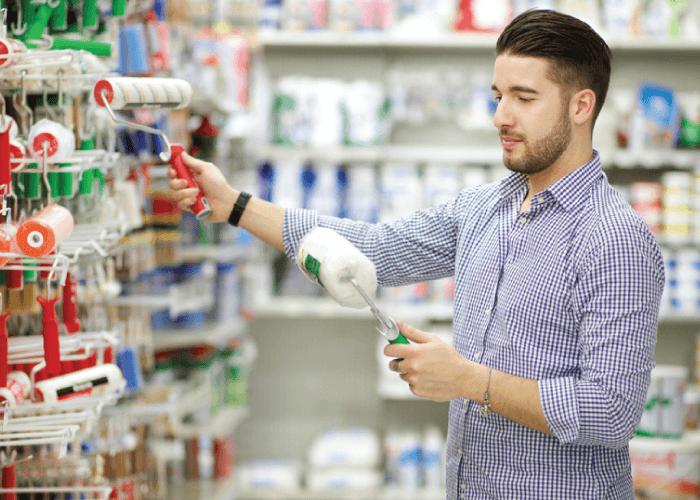8 Retail Marketing Strategies To Drive Sales

On this page
Every retail business needs to generate sales to survive, and this is virtually impossible without marketing. Marketing is all about how your retail business is perceived by prospective customers and current customers, as well as the market or segment your retail business belongs to. By using the right marketing strategies, you can drive awareness of your brand and build trust in the goods you offer, both online and in physical stores. Effective marketing strategies can also bring in a steady stream of new customers, generate referrals from satisfied customers through word of mouth, and help you allocate your marketing resources effectively.
There are many specific aspects of your retail business that need to be addressed with the right marketing tactics to boost sales, and below, you will find eight marketing strategies to consider adopting.
1. Create Impressive Storefronts
The rise of e-commerce has compelled physical stores to enhance their experiential factor. With customers having numerous buying options, retailers must offer a great experience to stand out. Yet, many businesses tend to overlook this crucial aspect of retail marketing. One of the few ways to attract passersby traffic to your online or physical store is by optimizing the design of your storefront.
For brick-and-mortar stores, it's important to design your storefront for better visibility with custom designs and adopt a minimalist approach that subtly attracts customers instead of overwhelming them. Even for e-commerce storefronts, such as social media platforms and websites, factors like website loading speed, website navigation, valuable content like blog posts, mobile-optimized user interfaces, and SEO visibility can serve as pull or push mechanisms to either attract customers or drive them away.
READ MORE: What Lies Ahead For Retail Media Networks In 2024
2. Motivate Employees With Better Compensation
Your employees are the ambassadors of your retail business. To get the best results, you need to incentivize them by compensating them properly. This can create an exceptional impression on your customers, resulting in memorable experiences. Moreover, the economic climate and labor shortages experienced in 2023 amid 'the great resignation' serve as further motivation for brands to retain staff.
Hiring and retaining customer-oriented, long-term, and committed employees can increase your customer retention rate, reduce employee turnover, and boost your profitability. Additionally, motivating your sales team with compensation packages can incentivize them to work harder and increase sales. For example, Neiman Marcus Group (NMG) positions itself as a unique player; not as a department store, but rather as a relationship business. The premise is simple: store associates cultivate long-term relationships with clients across Neiman Marcus and Bergdorf Goodman brands. Interestingly, only 2% of NMG customers generate a staggering 40% of overall revenue. By giving these shoppers the ultimate personalized experience, associates can drive sales and retain mainstay clients for years.
Encouraging your staff to share new marketing and customer relations management activations can be beneficial. Your employees may have a better contextual understanding of your customers and potential customers based on their one-on-one dealings with them.
3. Provide Adequate Employee Training
A company's success can depend on the quality of training provided to its employees. This is especially pertinent in retail, where store associates are responsible for making sales directly affecting the bottom line. Organizing regular training sessions and conferences to keep up with industry trends can go a long way to retaining employees. Neglecting to train employees can leave a business behind in its niche and create friction in the customer's shopping journey.

For retail businesses, employee training is crucial to maintaining good customer relationships, retail selling, and upselling skills. Training employees as soon as they are hired and conducting recurring training every few months is recommended to keep them updated with the latest consumer trends. This practice can ensure that a retail business has competent, happy employees who can contribute to its success.
4. Understand The Market
To increase sales, you need to do market research to get in-depth retail market data relating to sales performance, store portfolios, and competitor analysis, as well as keeping track of rapidly changing retail and consumer trends. Once you are equipped with this information, you are able to make more strategic decisions about your business.
For example, The Vitamin Shoppe used this data, combined with in-store analytics, to determine the best operating hours for their stores. They used store traffic data to better understand how to best serve both their customers and staff.
READ THE FULL CASE STUDY: Driving Payroll Effiency Amid 'The Great Resignation'
5. Engage Your Customers
Providing a personalized, valuable experience to customers is crucial to making them loyal. This doesn't involve marketing techniques like scripted lines from a greeter, but rather being helpful and truthful when answering their queries. To connect with customers, answer their questions from their perspective and share your own user experience or real customer experiences.
When customers leave, thank them for their purchase, invite them to return and leave a positive impression. It's also important to seek feedback, post Q&A online, engage customers in market research, and respond to reviews, both positive and negative. Additionally, you can use techniques like offering discounts and coupons to retain customers. Discounts can influence customer LTV but also impact customer behavior patterns, making them incredibly persuasive selling tools.
6. Leverage Social Media
In today's dynamic retail landscape, integrating social media into the marketing strategy is imperative for brands seeking to thrive and stay connected with their target audience. Social media platforms offer a direct and interactive channel for retailers to engage with customers, build brand awareness, and foster a sense of community. Through platforms like Instagram, Facebook, and Twitter, retailers can showcase their products creatively, sharing visually appealing content such as high-quality images, videos, and customer testimonials. This not only enhances the brand's online presence but also allows for direct communication with customers, enabling retailers to respond to inquiries, address concerns, and build a loyal customer base.

Moreover, social media provides a valuable platform for retailers to run targeted advertising campaigns, reaching specific demographics based on user interests, behavior, and location. By leveraging the vast amounts of user data available on social media platforms, retailers can tailor their marketing messages to resonate with their ideal customer profiles, thereby maximizing the effectiveness of their advertising efforts. Social media analytics tools also enable businesses to track the performance of their campaigns in real-time, allowing for continuous optimization and refinement of marketing strategies. Through strategic use of social media, retail businesses can not only boost brand visibility but also cultivate lasting relationships with customers, driving increased traffic to both physical stores and online platforms.
7. Smart Remarketing
You can increase your customer retention rates through remarketing. Remarketing refers to engaging audiences who have already interacted with your brand, to encourage them to take a desired action that may interest them, such as conversion.
Shoppers are usually distracted and can easily forget their positive shopper experience, whether at your online stores or at your brick-and-mortar stores. You need to remind them of their positive experience by engaging previous shoppers either with promotions and/or discounts based on past purchases or current consumer trends.
8. Be Strategic With Pricing
There are always changes in product demand due to seasonal or market changes, as well as consumer trends and competitor actions. Thus, you need to stay on top of your pricing game to keep your inventory moving. To do this, you must frequently change retail prices strategically in a way that attracts customers while covering costs and bringing in reasonable profit.
Not all marketing strategies will work for you, so it's important to experiment and be creative in using or combining different marketing tactics with a personal touch to make your retail business grow in awareness, popularity and, ultimately, sales.
About the author:

Ashton Kirsten, Global Brand Manager, RetailNext
Ashton holds a Master's Degree in English and is passionate about physical retail's unbridled potential to excite, entertain, serve, and solve problems for today's shoppers.




